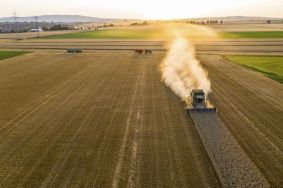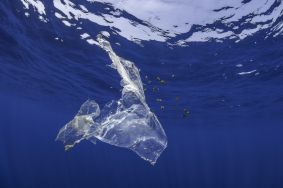Goal 2: Research, protect and use habitats and natural resources
Biodiversity and healthy ecosystems are the basis of all life. However, due to rapid population and economic growth and the consequences of climate change, they are highly vulnerable. Globally, water scarcity, water pollution and land degradation increasingly threaten our ecosystems and affect the economic and political stability of entire regions and countries. The protection and sustainable use of natural resources is therefore a central theme of the 2030 Agenda – and also of FONA.

The current decline in biodiversity and changes in terrestrial, inland aquatic and marine ecosystems are unprecedented in history.

The global demand for resources already exceeds what the Earth itself can renew. Global population growth will further increase pressure on natural resources such as clean water and usable land.

Our linear economy leads to excessive consumption of resources and produces large amounts of waste. Per capita demand for raw materials in Germany is twice as high as the global average.
Whether on land, in fresh waters or in the oceans, it all starts with healthy ecosystems. Worldwide, however, the condition of natural ecosystems is deteriorating, habitats are disappearing, and many animal and plant species are on the brink of extinction. In order to maintain or restore ecosystems, it is important, among other things, to stop the degradation of land surfaces, promote sustainable land management and improve biodiversity. The SDGs therefore strive to achieve a land degradation-neutral world by 2030.
Humankind is dependent on intact ecosystems, among other things when it comes to the secure supply of water. But millions of people suffer from water shortages and lack of hygiene. In addition to natural water scarcity, a lack of or inadequate supply infrastructures, resource overexploitation, climate change and environmental pollution can be responsible for this. What happens on land has an impact on water resources. This applies to the entry of nutrients and pollutants into the waterways, for example through agriculture, as well as to the handling of waste. Plastic debris in rivers, lakes and seas is a major international problem. The G-20 countries want to completely stop the entry of plastic into the world’s oceans by 2050.
The key to protecting resources lies in changing our way of operating the economy. Until now, economic activity worldwide has been largely linear. Resources are taken from nature in order to produce and consume economic goods and finally dispose of them as waste. Instead, we need a circular economy that uses natural resources without destroying their basis. This includes using resources more economically and efficiently. How this can work and what is required for it is what we address through FONA – to contribute to a future that benefits human health and the economy by protecting natural resources.
Last updated on






